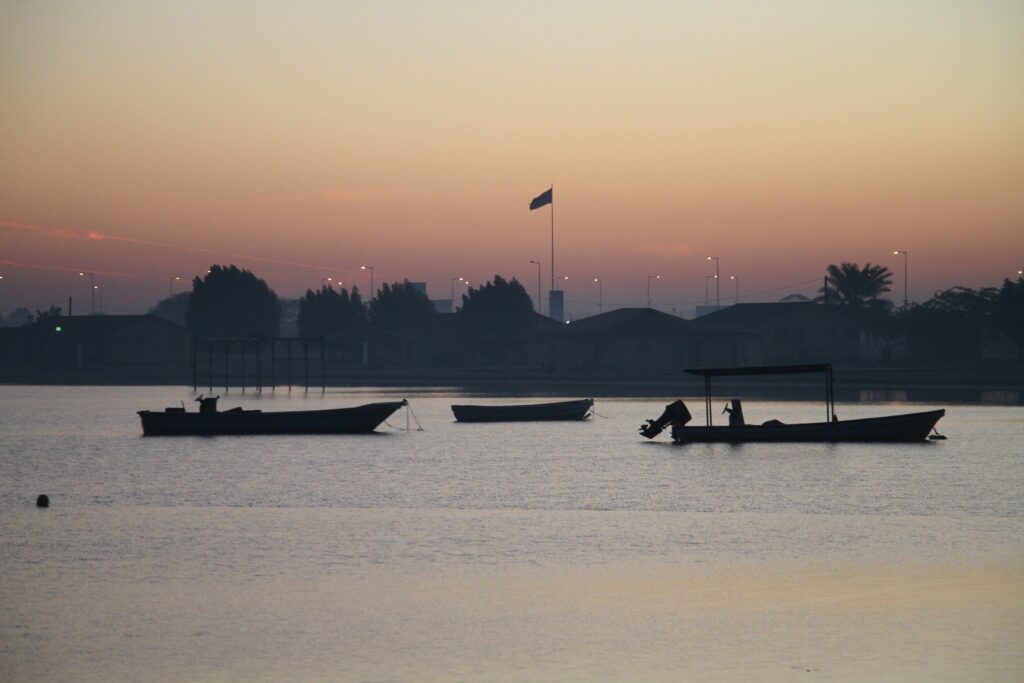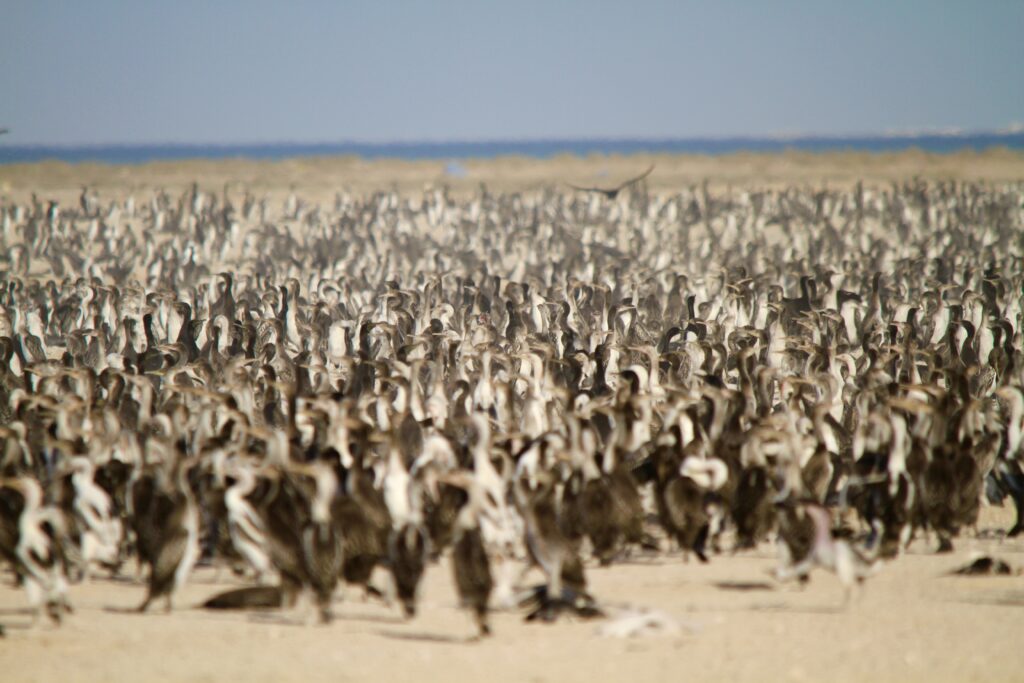By Adam Peck-Richardson
The Cormorant Oceanography Project made its first visit to the Hawar Islands, in the northern Arabian Gulf, in early December 2021. Myself (Adam Peck-Richardson) and collaborator Dr. Sabir Bin Muzaffar (United Arab Emirates University) spent four days visiting the Socotra cormorant colony at Rubd Al Shariqiya, a 1.5 km wide desert island surrounded by expansive shallow seagrass beds (and the world’s largest dugong aggregation). Unfortunately, the timing of our visit was later than originally planned and most of the cormorant chicks (10s of thousands) were very large and very mobile. This made it difficult to capture and tag adults at nests, but we were able to deploy four tags and gained valuable insights for further tagging work in 2022.

Data from the four tags immediately began streaming back to us (data are transmitted through cell phone network connections) and we are using this preliminary deployment to further improve tag design and performance. These GPS/GSM biologging tags, made by Ornitela (Vilnius, Lithuania), collect location and movement data and take detailed water temperature and depth measurements when the cormorants dive. Meanwhile, our oceanographer teammates at Oregon State University, led by Dr. Doruk Ardağ, have been spinning up a model of water temperature and circulation in the Arabian Gulf. The oceanographic data collected by cormorants are now being used to help calibrate and improve these complex regional models.






In 2022, we are planning to deploy additional oceanographic tags on Socotra cormorants at several colony sites throughout the region. These deployments will provide valuable data on population movements of Socotra cormorants and improve oceanographic modelling in the Arabian Gulf.

The Cormorant Oceanography project is based at Oregon State University and funded by the Office of Naval Research. Our work in Bahrain is made possible by logistical support from Dr. Abdulqader Khamis (University of Barcelona) and Dr. Humood Nasser (University of Bahrain), and administrative support from H. E. Sh. Ebrahim Alkhalifa and Rawan Suleiman (UNESCO – Arab Regional Centre for World Heritage). Local travel and logistics were coordinated with Sam Rowley and Nick Green (BBC – Natural History Unit) who are scouting for an upcoming project, Asia. Check out the brief clip below, from BBC’s Planet Earth, for an overview of how the Hawar Socotra cormorant colony fits into the Arabian Gulf’s desert-marine ecosystem.

